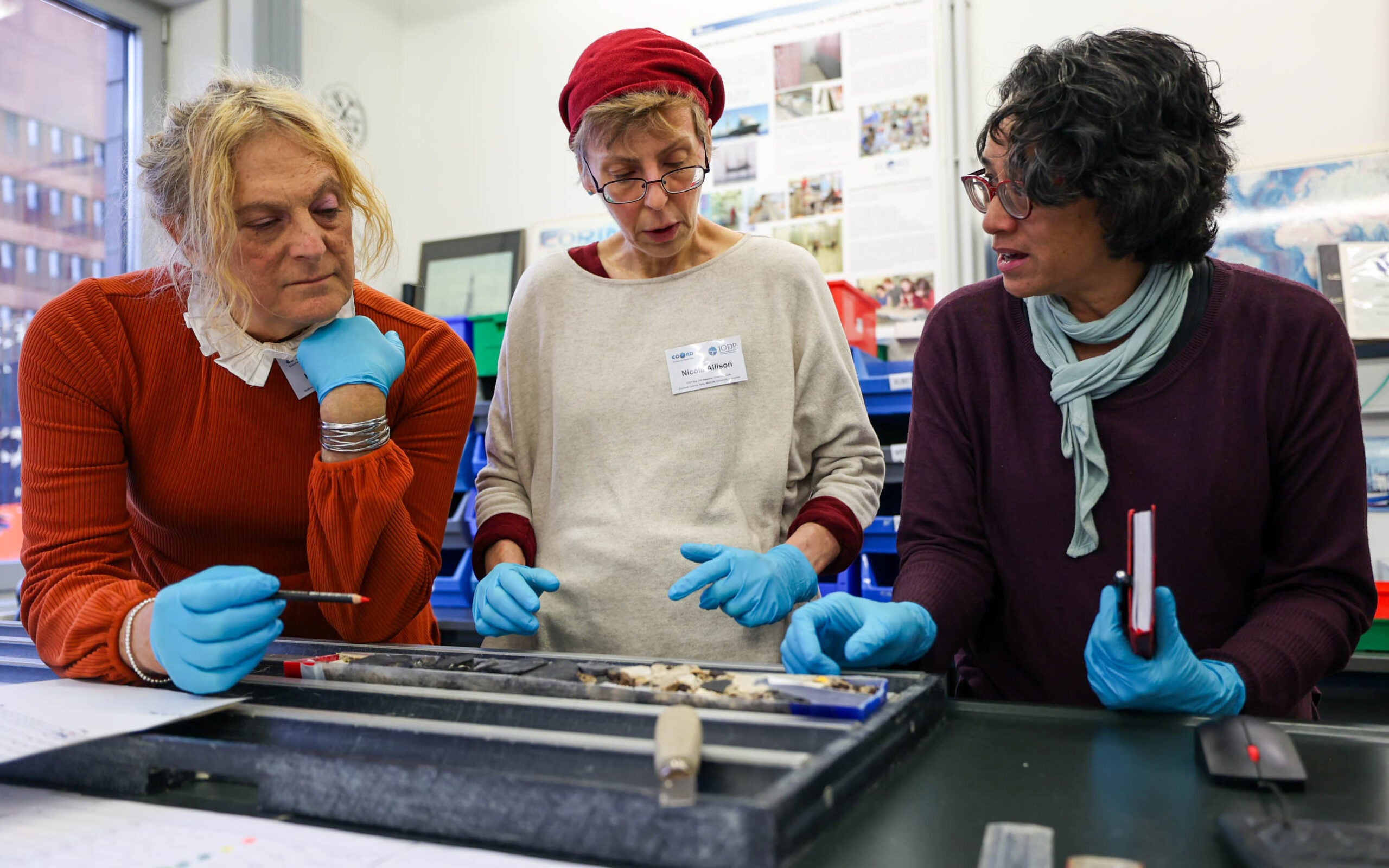GSO asst. dean part of international research team to obtain first high-resolution fossil coral record of environmental data off Hawaii
March 20, 2024
Kenna Rubin, associate dean for research at the University of Rhode Island’s Graduate School of Oceanography, was part of an international research team that succeeded in obtaining a rare, high-resolution continuous record of environmental data from shallow-water corals off the coast of Hawaii by coring fossil coral reefs. Rubin brings expertise in volcanology and geochronology to the expedition, where she led one of the sampling teams, and now continues to conduct research on samples at GSO.
Led by co-chief scientists Professor Jody Webster of the University of Sydney, Australia, and Professor Christina Ravelo of the University of California, Santa Cruz, this International Discovery Program (IODP) expedition marks a significant leap forward in understanding the region’s climatic and ecological history.
During the offshore phase of IODP Expedition 389 “Hawaiian Drowned Reefs” in September and October 2023, the team sailed aboard MMA Valour to collect, via remotely operating coring system, 426 meters of cores from below the seabed at depths ranging from 130 to 1,240 meters. In February 2024, they met at the IODP Bremen Core Repository, at MARUM – Center for Marine Environmental Sciences at the University of Bremen, Germany, to split, analyze and sample the cores and begin to interpret the data collected.
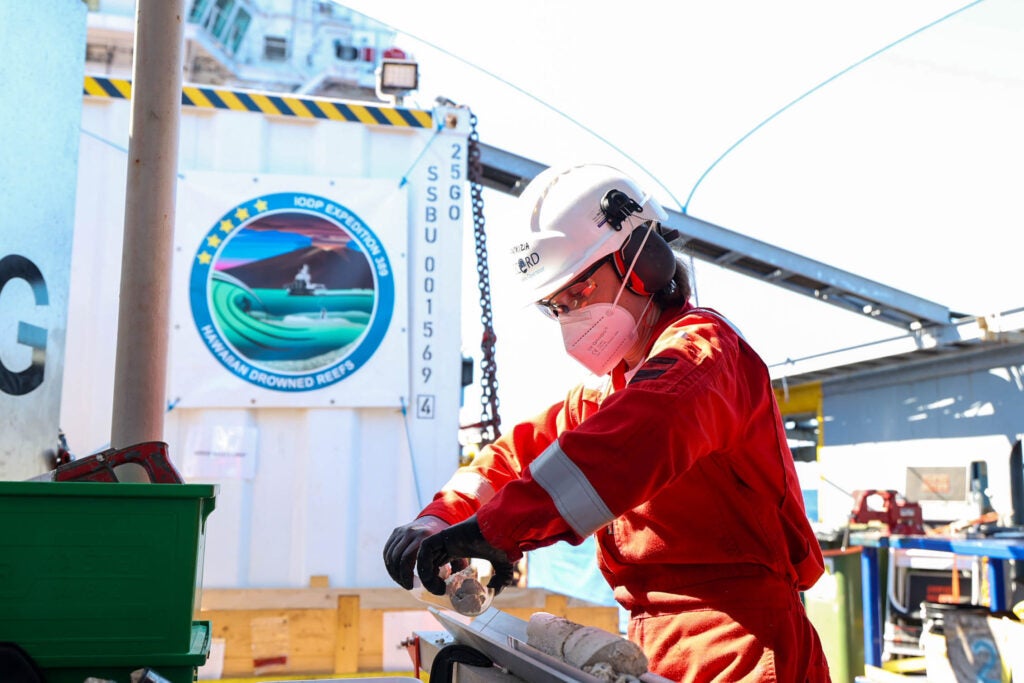
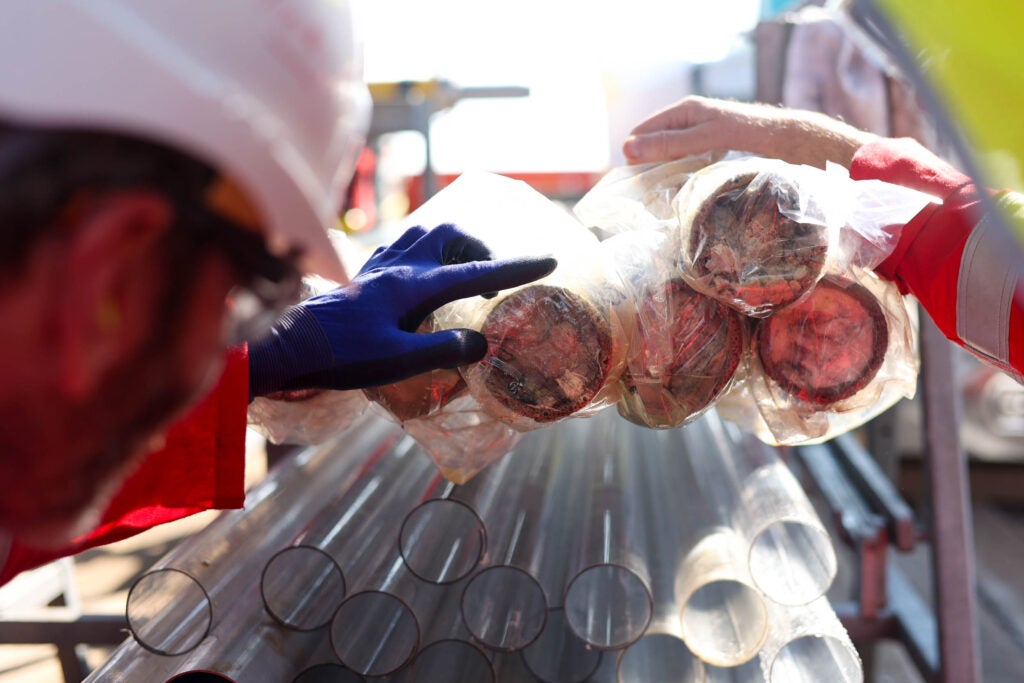
As the primary volcanologist on the science party, Rubin was responsible for identifying, describing, interpreting, and sampling volcanic rocks to understand the history of volcanism recorded in the sampled reefs. Between a quarter and a third of the usable material cored was lava that flowed under, within and on top of reefs, according to Rubin. “These samples will provide critical information about the environment of the reefs and the history of the Hawaii Island volcanoes during time periods that are not well represented on land.”
As one of five geochronologists involved, Rubin is also working to determine the age of coral reef material recovered to support the sea level change and paleoclimate aspects of the study. Dating these samples and placing them within the context of the Earth’s history will provide valuable insight into the mechanisms that cause climate change, including abrupt events, and into the impact of these changes on reef growth, structure and health.
Professor Jody Webster expressed excitement over the prospects, stating, “We were able to recover a spectacular sequence of fossil coral reef deposits that will enable us to decipher in unprecedented detail how sea level, paleoclimate, and the reef ecosystem have changed over the past 500,000 years, particularly during periods of rapid global change.”
The expedition, which saw the collaboration of 31 scientists from various countries including Australia, Austria, China, Denmark, France, Germany, Great Britain, India, Japan, the Netherlands, Spain, and the U.S.A., signifies years of planning and coordination. “The best part of the expedition, aside from the rocks, was meeting and working with a diverse group of scientists that share the same or overlapping passions with me,” said Rubin. “I am proud to be part of a team that includes folks that have worked for two decades to pull off this expedition.”
The scientists involved will continue to decipher detailed information from the unique samples and associated data over the next few years in their home laboratories. At GSO, Rubin and her students will do volcanic forensics to determine the age of the lavas, their chemistry and a physical volcanological analysis to determine the eruption conditions. They will also look specifically at corals from the time period from about 150,000 to 250,000 years ago to determine the sea level history and reef responses.
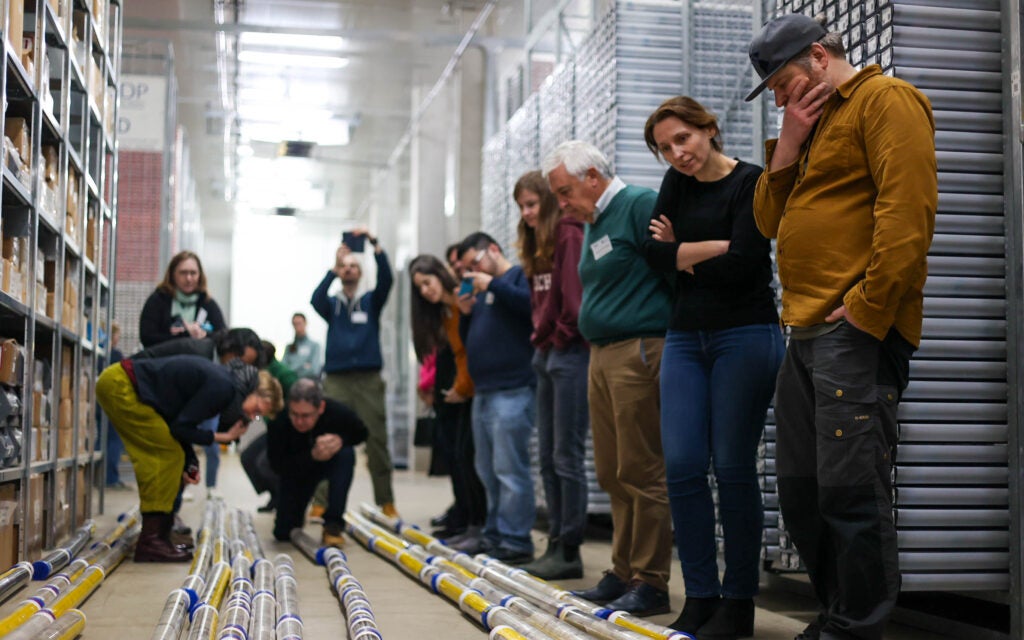
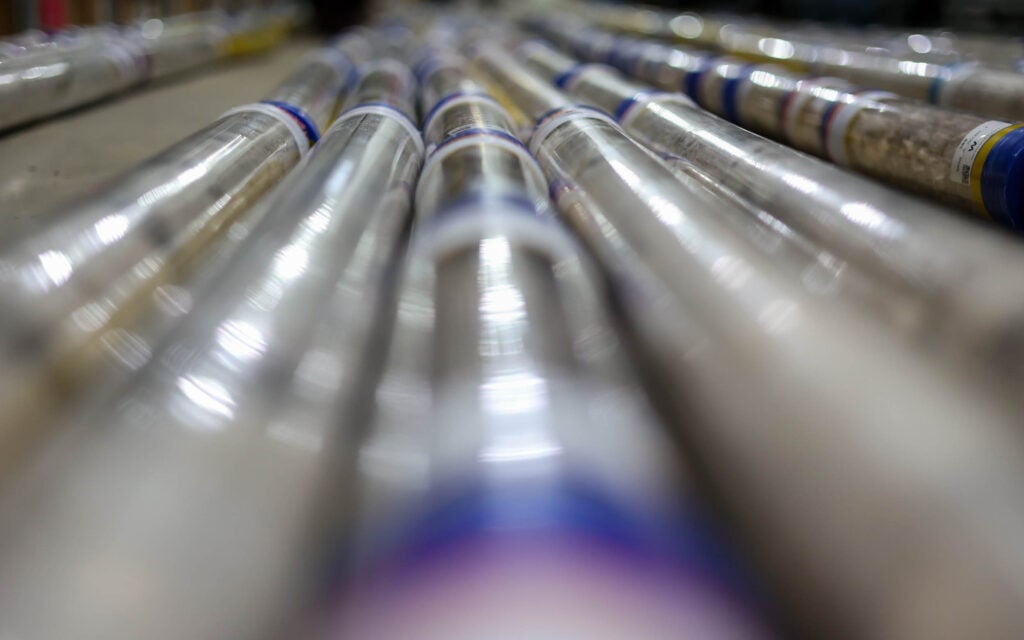
Importantly, like past IODP expeditions, the cores and data obtained will be archived and made accessible to the global scientific community, facilitating further research and discoveries. With findings expected to be published in the months and years following the one-year moratorium period, the expedition marks a pivotal moment in unraveling the intricate tapestry of Earth’s environmental history and providing insight into how reefs have changed in the past, to help us plan for future change.
“People might say why study this, since we know the climate is changing,” says Rubin. “The answer is we study this to see how the ecosystem reacts, and over what timescale.”
This story was written by Mackensie duPont Crowley, digital communications coordinator with URI’s Graduate School of Oceanography.

